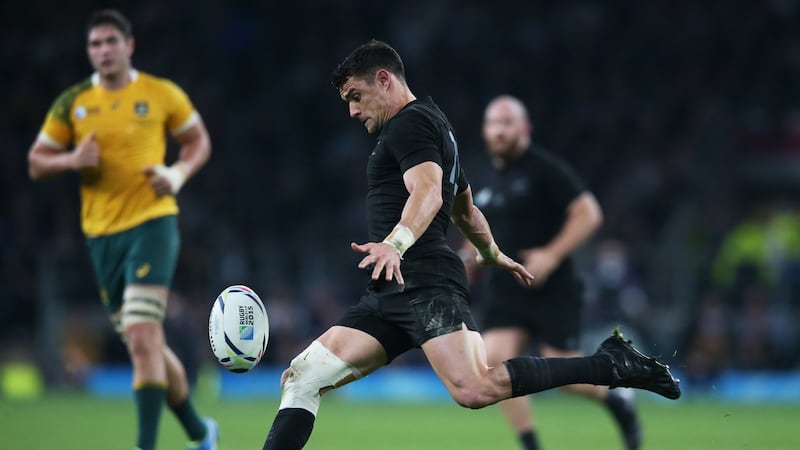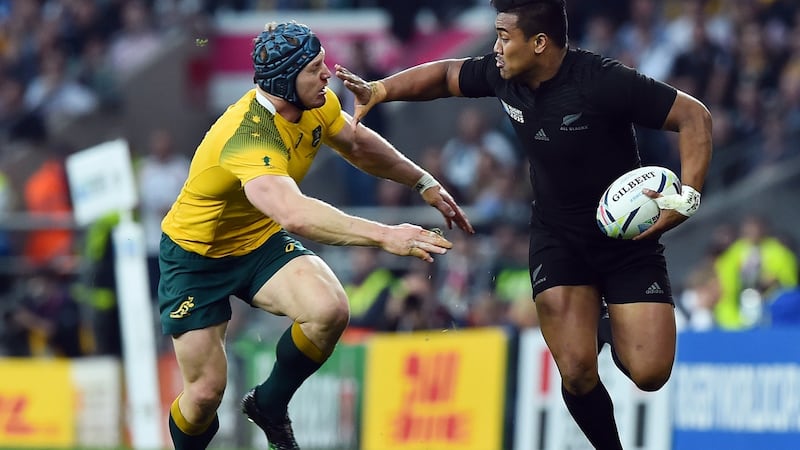“Groupthink” is defined as “the practice of thinking or making decisions as a group, typically resulting in unchallenged, poor quality decision making.”
When I have witnessed groupthink up close and personal it was always facilitated through weak leadership. Mostly when ego-driven leaders discourage alternative pathways from being put forward by their management teams.
Or those same leaders surrounding themselves with weak spirited minds that fear questioning or challenging their leadership. This type of attitude invites poor quality decision making into any organisation.
In France, the creative genius of <a class="search" href='javascript:window.parent.actionEventData({$contentId:"7.1213540", $action:"view", $target:"work"})' polopoly:contentid="7.1213540" polopoly:searchtag="tag_person">Antoine Dupont</a> is making multiple line breaks because of the same defensive coaches repeated inability to adapt
Across the last few weekends of the Heineken Cup and the URC, we have witnessed a handful of leading clubs like Toulouse, Leinster and La Rochelle who seem to be avoiding groupthink and are remaining creative.
Across the majority of the rest of the clubs, coaching groupthink is ever present. That is why we are witnessing the same game plans, the same defensive systems and the same attacking shapes being repeated across multiple teams without a pinch of originality.
The cult of “copy and paste” coaching is flourishing.
For example, the success of the excellent short attacking kicks that Leinster have introduced into their play are working because the overwhelming majority of defensive coaches are stuck in a groupthink rut that has not allowed them to adapt their systems to counter these great kicks. They have failed to create a hybrid system that can cover their backfield while keeping the integrity of their defensive front line.
In France, the creative genius of Antoine Dupont is making multiple line breaks because of the same defensive coaches repeated inability to adapt. Toulouse and Dupont understand that almost every team on the planet is using a system that instructs the first arriving defenders at the ruck to leave their place close to the ruck and move laterally or "flow" out wider in the defensive line.
Dupont simply watches the feet of the first defenders. The instant that the defender moves his feet to step laterally, Dupont attacks the space the moving defender has just left.
Toulouse follow Napoleon’s philosophy of “never interrupt your opponent while they are making a mistake”. The current groupthink on defensive set-ups is enhancing Dupont and Toulouse in every match.
Next week if Munster allow their close ruck defenders to move out and do not lock them into place, as was the defensive groupthink a decade ago, then Dupont will cut them apart as he has done to every team.

An example of creative “none groupthink” in the rugby business was evident in the uniform the New Zealand rugby team wore at the 2015 Rugby World Cup. The entire team strip, including socks and boots, were “all black”.
In a brave and brilliant piece of marketing leadership, their long-term sponsors Adidas, remarkably blacked out their trademark three white stripes from the Kiwis’ socks and boots.
Black was the new white stripe.
Imagine the creative environment that empowered a group inside the Adidas organisation to suggest to their leadership that their major marketing strategy for rugby’s biggest stage was to cover up their trademark on the corporation’s most famous sponsored team.
For the senior decision makers to listen to the idea, consider it, and then have the substantial bravery to go against every convention in marketing and all but cover up their trademark required outstanding leadership.
The counterintuitive genius was that when Adidas blackened the three strips on the Kiwis boots and socks, they became far more obvious than if left them white. In an instant Adidas boots with black stripes became “hip” and the “groupthinkers” hated it.
For the past two decades, the New Zealanders’ onfield innovation has mirrored that of their sponsors.
A simple glance at the standard of play produced by Kiwi teams across the opening rounds of Super Rugby tells us all that they remain at the apex of innovation in rugby.
This dominance had its genesis in the late 1990s when the New Zealanders created an annual end of season coaching forum for their leading national and provincial coaches. If a coach had produced an innovative and effective piece of play that season then that coach had to share his intellectual property and innovations with his coaching peers.

The end result was that each year the collective knowledge of all the participating coaches was enhanced. This sharing of the coaches’ intellectual property accelerated the process of innovation across the New Zealand system. It forced the coach who had created a great counterattack during the season to share his knowledge with his competitors. This forced his own system to evolve just to keep ahead of his opponents, who now had his old knowledge.
The forum broke the previous behaviours of coaches across the long competitive history of New Zealand interprovincial rugby by forcing them to share their information. The results of the New Zealand national team over the past two decades justify those innovative actions.
Almost every European team remains ineffective in attacking the acres of space that is currently unguarded close to the scrum
Here let me remind you that there is no such thing as “old school” versus so called “modern coaching”. There is only one type of successful coaching and that is effective coaching.
Almost every European team remains ineffective in attacking the acres of space that is currently unguarded close to the scrum. The groupthink of scrum coaches has not educated the current generation of defending flankers to watch the ball as it moves back through the opposition scrum. So we now have the unimaginable situation of the flankers no longer defending the close channels, which is a mortal backrow sin.
The madness does not end there. The copy and paste attack coaches have not bothered their a***s to even consider this grave defensive error so that at almost every scrum the opportunity for the attacking team goes begging.
Gregory Alldritt, La Rochelle's powerful number eight, is an exception who is providing his team with some highly effective "go-forward" running off the base of his scrum.
However, a number eight picking up the ball and running is the 1-0-1 of backrow attack.
I hope that one day soon an innovative attack coach will break free of the groupthink and reintroduce organised backrow attacking plays to our game.
Backrow moves were a spectacular and highly effective attacking weapon. Currently groupthink by scrummaging coaches has dumbed down all eight forwards into mindless beasts of burden at every scrum. Asking how the forward could attack the space close to the scrum has sadly gone the way of the giant Irish red elk.
The clubs that suffer the least from groupthink are also Europe’s best innovators. It will be no accident if Leinster, Toulouse, La Rochelle and perhaps Racing 92 reach the Heineken Champions Cup semi-finals.
The rest of the clubs will have plenty of time to think about where it all went wrong.











